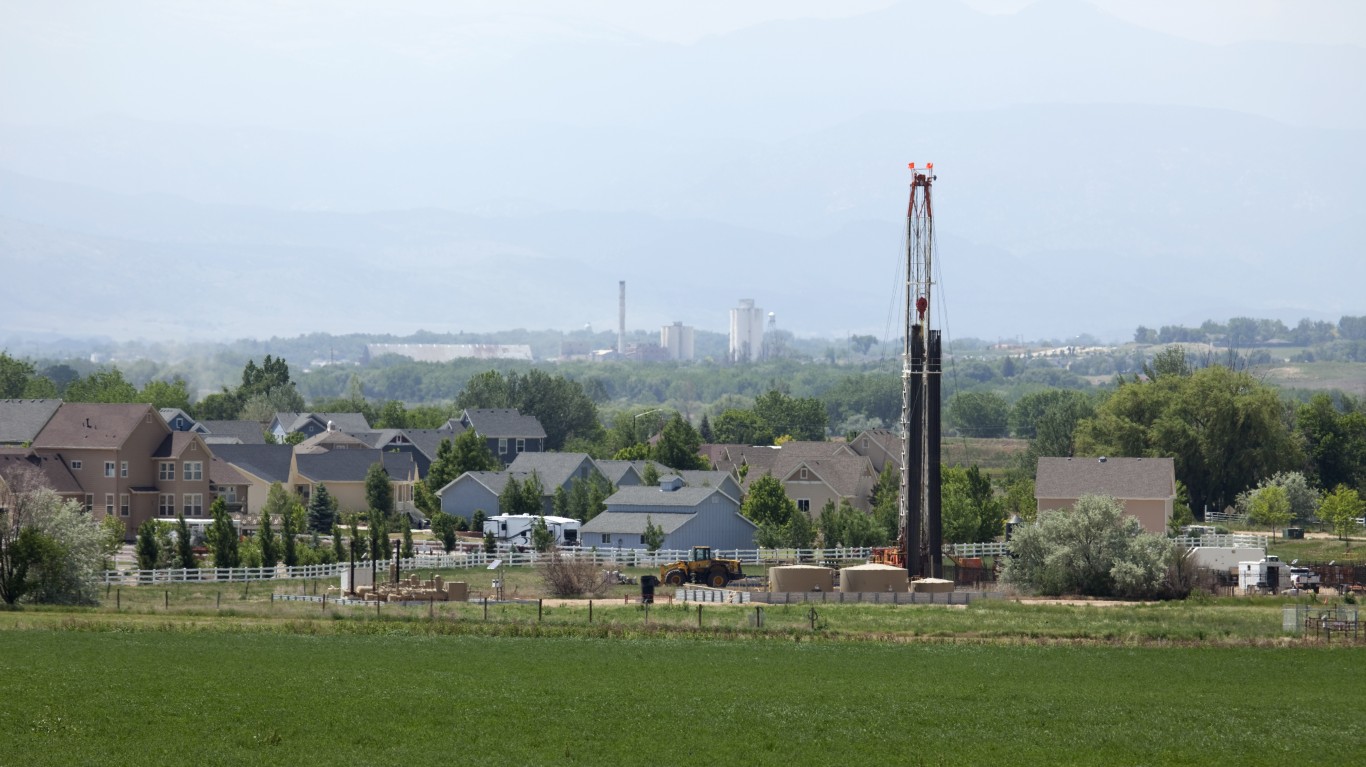
As the economy slows while global oil production does not, gas prices are expected to drop after Labor Day, which concludes the summer driving season. Forecasts of U.S. GDP have moved, in many cases, from an expansion of 2.5% to a potential recession late this year or in 2020. And, a ramp-up in the trade war with China could make that much worse. Sharp slowdowns in the economy are often married to lower gas prices and this time around should be no different. The odds that gas prices will be $2 by the end of the year are increasing rapidly.
Gas prices in parts of the south are already under $2. Statewide, they have dropped below $2.25 in five states–Louisiana, Mississippi. South Caroline, Alabama, and Oklahoma, according to GasBuddy. That is against an average national price for a gallon of regular at $2.59, down from $2.79 a month ago.
Oil prices are, by far, the largest component of gas prices. Crude prices were $66 in May, and have since dropped to $54. They appear to be headed back to their 2019 low of $46. Among the reasons for the drop, according to the International Energy Agency, is a slowing economy in China, the world’s largest oil importer, and increases in production, particularly in the U.S. Economies across the EU have also experienced sharp slowdowns. Germany, the largest economy in the region may be headed into a recession based on its latest GDP report. These factors mean that America may be the only major engine of GDP improvement in the world in the second half of this year.
Against this background of falling demand, the U.S. has become the world’s largest oil producer, primarily on the back of rising shale production. That production continues to ramp up, and there is no end in sight. The availability of shale in the areas around the Dakotas and above the Canadian border in that area will last for several decades.
At the end of the 2001 recession, gas prices dropped under $1.40. They did not get as low in the Great Recession but dropped from $3.62 to $2.14 over a period of fewer than eight years. Drops in oil supplies from some major energy-producing nations kept them from dropping below the $2 mark when the recession was at its worst. Many of those production limits do not exist now.
Another major factor in gas prices is refinery capability. Shutdowns of major refineries for upgrade and repair ended with the spring, and most refinery capacity is back online.
24/7 innumerate the specific reasons there could be a recession this year. And, if an economic slowdown is on the way, so very likely is the advent of a period of $2 gas.
Travel Cards Are Getting Too Good To Ignore (sponsored)
Credit card companies are pulling out all the stops, with the issuers are offering insane travel rewards and perks.
We’re talking huge sign-up bonuses, points on every purchase, and benefits like lounge access, travel credits, and free hotel nights. For travelers, these rewards can add up to thousands of dollars in flights, upgrades, and luxury experiences every year.
It’s like getting paid to travel — and it’s available to qualified borrowers who know where to look.
We’ve rounded up some of the best travel credit cards on the market. Click here to see the list. Don’t miss these offers — they won’t be this good forever.
Thank you for reading! Have some feedback for us?
Contact the 24/7 Wall St. editorial team.




